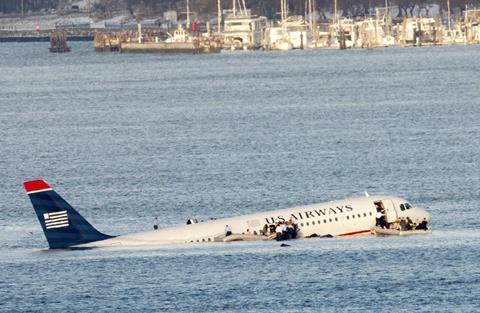Fourteen years after bird strikes forced the ditching of US Airways flight 1549 into the Hudson River, the Federal Aviation Administration has completed a rule intended to make aircraft engines more resilient to ingesting birds.
The FAA on 4 April published a final rule requiring turbofans be tested to ensure resilience against what is calls “the largest medium flocking” birds.

Existing regulations already require turbofans be capable of continued operation after ingesting such birds, which regulations define as weighing up to 1.15kg (2.5lb).
But the new rule seeks to address heightened risk resulting from bird ingestions when engines are not running at full power.
US Airways flight 1549 – an Airbus A320 – took off on 15 January 2009 from New York’s LaGuardia airport and struck a flock of Canada geese at 2,800ft.
Both the jet’s CFM International CFM56 turbofans failed after ingesting geese, leading the pilots to ditch the aircraft in the Hudson River. No passengers or crew died in the incident, but five people were seriously injured, according to the National Transportation Safety Board (NTSB).
The safety investigatory bureau found that the engines were operating at an 80% fan speed when they ingested the birds. Aircraft operators frequently climb at such reduced engine thrust settings, a practice which can reduce maintenance costs and improve reliability.
But FAA airworthiness regulations at the time required turbofans be tested against small and medium-size bird strikes while operating at 100% take-off thrust.
The NTSB’s report noted that slower fan speeds can permit more bird mass to enter an engine’s core, causing more engine damage. In response, it recommended that the FAA write new rules to address ingestions of “medium flocking birds” at the “lowest expected fan speed… for the minimum climb rate”.
The FAA’s rule accomplishes that goal. It requires a test involving firing a medium-size bird at 261kt (483km/hr) into engines running at “the mechanical engine fan speed set at the lowest expected speed when climbing through 3,000ft”.
“The bird must be aimed at the first exposed rotating stage or stages, at the blade airfoil height, as measured at the leading edge that will result in maximum bird material ingestion into the engine core,” it says.


























